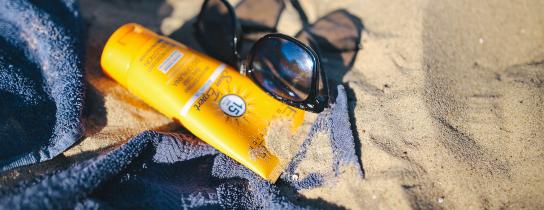
Sun - know the facts! Lessons from a Dermatologist
The sun has played an important, and even mystical, role in human society from ancient to modern times. The sun “worshiper” relaxing on the beach is predated by literal sun worshipers in ancient Mayan and Incan cultures. The Greek myth of Icarus, flying precariously close to the sun with his wings crafted from feathers and wax, hints at the tantalizing allure and power of the sun. Unfortunately for Icarus, too much sun was his downfall. Let’s not make too much sun our downfall.
As a board-certified dermatologist, I constantly advise my patients about sun avoidance and protection. Sun exposure, over time, increases the risk of some of the most common skin cancers, such as basal-cell and squamous-cell carcinoma. Sun exposure is also linked to melanoma, the most deadly form of skin cancer. Skin cancers typically require surgery, and some skin cancers spread to other sites, or metastasize. Rest assured, the danger is real, and there are many steps that we can take to prevent it.
- First, avoid the sun during its peak hours, roughly 10 AM to 4PM. Go to the beach when most people are starting to leave. Play golf during “twilight” hours, after 4PM, it may be even easier on your wallet!
- Second, seek shade. Shade provides some shelter from the sun’s rays. Wait in the shadow of a tree or a building, rather than baking directly under the sun.
- Third, protect yourself from the sun. Sunscreens are the obvious choice, but there are specific characteristics that you should look for in any sunscreen you use. Make sure that the label states “broad spectrum” or “UVA/UVB” protection, and has an “SPF” (Sun Protection Factor) of 30 or higher. Although a higher SPF is marginally better, make sure that your sunscreen has at least an SPF of 30. Remember also that even though you are in your car or indoors, you are still vulnerable if you are near windows, as “UVA” rays can penetrate glass. Sun-protective clothing is also a good option, and some jackets and shirts have “UPF” (Ultraviolet Protection Factor), so you know that they provide good protection from sun. Also, wear a broad-brimmed hat and sunglasses.
Of course, the above recommendations are merely the tip of the iceberg regarding sun avoidance and protection, but it’s a good start, especially with summer weather and both the possibility and temptation to get a lot of sun exposure. I do get asked quite often, “What about vitamin D, Doc?” Please ask your own primary-care doctor regarding specifics, but vitamin D can more safely be obtained through your diet, and possibly with vitamin D supplements, without increasing your risk of skin cancer. Enjoy the sun, but from a distance, unlike Icarus, who got too close, and got burned. And if you do get burned, or have a suspicious spot on your skin, please see your friendly, neighborhood Board Certified dermatologist!

 Optum Radiology at Crystal Run Healthcare
Optum Radiology at Crystal Run Healthcare Request medical records online
Request medical records online